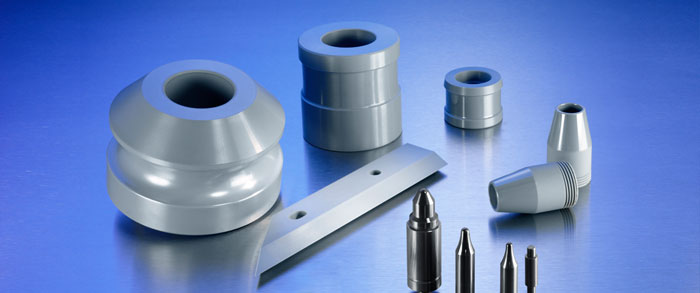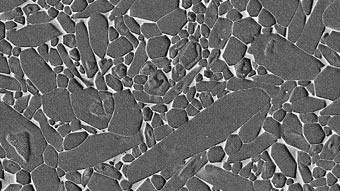MovEnergy advantage of technological advances in the ceramics industry by choosing to manufacture its combustion chambers (Combustor) in Silicon Nitride Ceramic

Size 40 cm high 17 cm diameter 1 cm thickness
Silicon Nitride Ceramic
As modern industry continues to demand stronger, harder, more wear resistant and heat resistant materials, which will operate cost effectively in hostile environments, it has become essential to seek alternative engineering materials.
The discovery of silicon nitride in 1857 by Deville and Whaler caused no excitement among the engineering fraternity of the day. Yet the announcement more than a century later, in 1972, that an alloy of this same material had been found stimulated enormous interest and triggered off investigations on a worldwide scale. The reasons why the two events were heralded in such dissimilar ways gives us an insight into the developments that have taken place in our major industries.
Modern industry requires stronger, harder, more wear resistant and heat resistant materials, which will operate cost effectively in more hostile environments than ever before. Today’s aircraft engines require increasing thrust to weight ratios, which is generally achieved by both weight reduction and increased turbine inlet temperatures. The required operating temperatures of modern jet engines exceed the temperature limitations imposed by metallic turbine components. It has therefore become essential to seek alternative engineering materials.
In metal forming, escalating labour and capital costs mean that forming dies and rollers have to produce higher tonnages to greater tolerances than before. In extrusion and drawing operations for example, surface finish and metallurgical properties, combined with the need for highly toleranced often means that traditional die materials are no longer effective.
Wear resistance and resistance to chemical attack are of prime importance for today’s high–technology materials. Power stations, which burn powdered fuel, suffer severely from burner tip erosion. Coal dewatering plants require highly abrasive resistant materials for their filtration systems and super hard nitride ceramics are replacing the more traditional tungsten carbide in many of these applications.
Restrictions on emissions for automotive engines and higher fuel costs have stimulated an interest in the use of super–hard light–weight inert materials in the automotive industry; in fact ceramics have become accepted in most industries.
Industrial Wear Applications
International sialon manufacture a range of advanced ceramic silicon nitride and sialon immersion heater and riser tubes for use in the aluminium and non–ferrous molten metal handling industries. Fine silicon nitride and sialon foundry products offer long life, improved process reliability and are cost effective compared to competitive materials, such as cast iron and refractory ceramics, such as silicon carbide and aluminium titanate. Sialon is an alloy of silicon nitride and combines excellent thermal and mechanical properties.
Immersion heater tubes are the most effective method of heating the melt in the aluminium processing industry. Syalon 101 tubes offer protection to heating elements due to its excellent physical properties.
The range of heater/riser tubes available is very diverse, although we are limited to a maximum outside diameter of 200mm and maximum length of 1500mm.
The Ceramic Material for Extreme Applications
Silicon nitrides (Si3N4) feature an excellent combination of material properties. They are nearly as light as silicon carbide (SiC), but their microstructure gives them excellent thermal shock resistance and their high fracture toughness makes them resistant to impacts and shocks.

Properties of Silicon Nitride (Si3N4)
- Very low density (3.21 g/cm3)
- Very high fracture toughness (7 MPam1/2)
- Good flexural strength (850 MPa)
- Very good thermal shock resistance: High thermal stress parameters (569 K)
- Maximum operating temperature in an oxidizing atmosphere: 1,300°C
- Maximum operating temperature in a neutral atmosphere: 1,600°C

The microstructure consists of elongated crystals that interlock into micro-rods. One application where this combination of properties has proven particularly useful is the machining of gray cast iron or cast iron with ceramic inserts. Unlike hard metals or other cutting materials, machining processes can be performed with ceramic inserts at maximum speed without the use of cooling lubricants. The combination of good tribological properties and excellent fracture toughness makes silicon nitride ceramics predestined for applications as balls and rolling elements for light and extremely precise bearings, heavy-duty ceramic forming tools and automotive components subject to high stress. And the good thermal shock resistance and high temperature resistance is exploited in welding processes.
